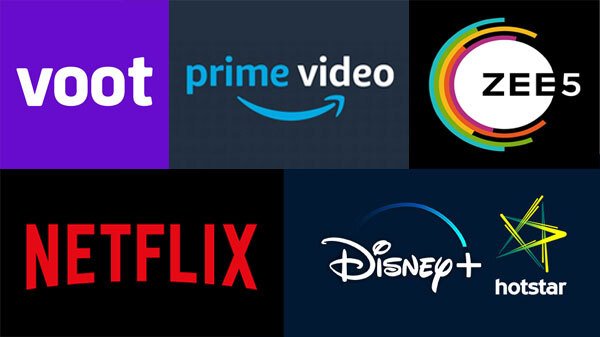This article is written by Jai Shetty, pursuing Diploma in Media and Entertainment Law: Contracts, Licensing and Regulations from LawSikho.
Table of Contents
Introduction
Nowadays, the Indian Government (“GOI”) has been rampant in enforcing one draconian law to another. They are trying their utmost best to get everyone in order or everyone under their control. It is a matter of how one perceives the situation. The conditions in India have always been different as compared to the West. One simply cannot make a slightly funny caricature of anyone from the ruling Government as that will be perceived as being anti-national. Freedom of speech and expression is curtailed to such an extent that we need to be doubly sure, as to what we are posting on any social media platform. The same policy applies to Over The Top (“OTT”) platforms as well. In the past, there have been several ridiculous bans implemented in India, which is why one does not find it strange when the attention has now turned to OTT platforms.
OTT platforms are no strangers to controversy (at least in India). Religious sentiments or scenes that are deemed indecent or immoral do not always sit well with Indian audiences. People moving the court to either ban the film or the web series on grounds of hurting sentiments and graphic scenes are at an all-time high.
When the world was stuck with COVID-19, there was a sudden surge in online viewership in India. People were glued to not only their television but also their phone screens. Record-breaking viewership numbers were reported from India and as a result, many international OTT platforms were producing more and more Indian content catering specifically to the Indian audience.
Application of test of obscenity for content on OTT platform
Primarily, the content which is made available to the public by way of films and tv shows exhibited traditionally, viz., theatre and television (broadcasted content) are governed by laws. The broadcasted content has been a regulated subject. The Cable Networks Television (Regulation) Act, 1995 governs television broadcasting in India, whereas the Cinematograph Act, 1952 and the relevant rules therein, regulates public exhibition of films in India.
The same is not the case when it comes to content that is readily available on these OTT platforms. Some of these contents are unregulated, to say the least, and there are no laws or regulations. Some are in favour of heavy censorship of these films and shows which are shown on such platforms.
The provisions of the Cinematograph Act are primarily applicable to those films that are shown in theatres and not applicable to the ones which are transmitted through the medium of the internet. Any certifications of a film by CBFC do not apply to the contents streamed on OTT platforms.
Platforms like Netflix, Amazon Prime, Hotstar, etc. always put up warnings at the start of the web series detailing the graphics of the shows by putting up phrases like 18+, crude sexual content, strong language, etc. This enables the user to either proceed with the content or not.
An OTT platform does not require a Central Board of Film Certification and the provisions of the Cinematograph Act, 1952. Such platform service providers come under the aegis of Internet and Mobile Association of India (“IMAI”) and have adopted voluntary censorship, “Code for self-regulation of online curated content providers“. This code regulates the dissemination of the content and also ensures that age-appropriate content is made available to the audience. It restricts the OTT platforms from exhibiting or promoting inappropriate content to the public.
There has been a sudden push to regulate the content on OTT platforms. More often than not, OTT platforms have been let off scot-free due to the lack of regulations.
Now, the attention has turned to OTT platforms, wherein a sea of content, not foisted but is conferred upon the users. Apart from following the basic laws of the land, OTT platforms do not have any regulating body to regulate the content per se.
There are no particular tests as such that govern the content on these online platforms. Although the courts in India have adopted the Hicklin test and the Roth Test to check what constitutes an obscene matter.
The Hicklin test was adopted in the case of Regina vs Hicklin, wherein it was laid down that the publication can be judged for obscenity, based on an isolated part of the work considered out of the context. While applying Hicklin Test, the work is taken out of the whole context of the work and then it is seen that if that work is creating any apparent influence on the most susceptible readers/viewers such as children or weak-minded adults.
The second test is the Roth test, which was developed by the US Courts in 1957 to judge such obscenity. It was held that only those sex-related materials which tended exciting lustful thoughts were found to be obscene and the same has to be judged from the view of an average person by applying contemporary community standards. This test was considered to be sharper and narrower than the Hicklin test as it does not isolate the alleged contents but limits itself to the dominant theme of the whole material and checks whether if taken as a whole, it has to redeem social value or not.
Censorship rules for OTT
In a country like India, laws to regulate the content on the OTT platform are the need of the hour. OTT platforms enjoy total freedom from screening their content which more often than not leads to an uproar in the country. While hearing a plea by Aparna Purohit, Amazon Head of India Originals, challenging the Allahabad High Court order denying her anticipatory bail in connection with FIRs lodged over the Tandav web series, the Supreme Court stated that “Traditional film viewing has become obsolete. People watching films on these platforms has become common. Should there not be some screening? We feel there should be some screening… At times they are showing pornography too,” The court further stated that a certain degree of screening must be done before showing such films or web series to the general public.
Since there weren’t any robust laws or legal framework vis-à-vis the content on OTT platforms, the Government released Information Technology (Guidelines for Intermediaries and Digital Media Ethics Code) Rules, 2021 (“IT Rules”).
OTT platforms are concerned with Part – III of the rules, to which we are going to restrict ourselves, which contains the Code of Ethics, procedure, and safeguards concerning digital media. The same is administered by the Ministry of Information and Broadcasting (“MIB”). The MIB is empowered for the implementation of this Code of Ethics. These have to be diligently followed by OTT platforms, online news, and digital media entities. OTT platforms would now be called ‘publishers of online curated content’ under the new rules.
The rules are as follows pertaining only to OTT platforms:
-
Self-classification of content
The OTT platforms, called the publishers of online curated content in the rules, would self-classify the content into five age-based categories- U (Universal), U/A 7+, U/A 13+, U/A 16+, and A (Adult). Platforms would be further required to implement parental locks for content classified as U/A 13+ or higher, and reliable age verification mechanisms for content classified as “A”. The publisher of online curated content shall prominently display the classification rating specific to each content or program together with a content descriptor informing the user about the nature of the content, and advising on viewer description (if applicable) at the beginning of every program enabling the user to make an informed decision, before watching the program.
-
Compliance officer
In total, three compliance officers must be appointed by the OTT platforms and they should all be residents in India. These compliance officers are as follows –
(1) Chief Compliance Officer,
(2) Nodal Contact Person and
(3) The Resident Grievance Officer.
-
Compliance report
These platforms also have to publish a monthly report mentioning the details of complaints received and the action taken.
Along with the Code of Ethics, a three-tier grievance redressal must also be established to deal with and resolve any complaints made by the user.
1st level: Self-regulation by the publishers
A Grievance Officer shall be appointed to deal with the complaints from the victim viz., the user, and even the name and contact details of such officers must be shared by such intermediaries. He shall acknowledge the complaint must be acknowledged by the Grievance Officer within twenty-four hours and he must resolve it within fifteen days from the date of receipt.
2nd level: Self-regulatory body
Self-regulation is carried out by one or more self-regulating bodies of the publishers to address the grievances that the publisher hasn’t resolved within 15 days. This body will consist of not more than six members and will be headed by a retired judge of the High Court, Supreme Court, or an independent eminent person.
3rd level: Oversight mechanism
The Oversight mechanism shall be formulated by the MIB. In addition to this, an Interdepartmental Committee shall be constituted for hearing and resolving the grievances.
Conclusion
The user, like you and me, have tons of options regarding what one wants to view. Similarly, the same person also has an option to stop viewing such web series or films, after finding out it is not suitable for that user. For the first time, the user while enjoying the cinematic experience on his phone or in the comfort of his/her home, the user can simply change or stop the content if he/she feels that the contents of this web series/film are not suitable for that person.
The practice of self-classification was in place since its inception but the real question is whether the user can make a conscious decision to stop himself from watching the content or continue watching it. This varies from person to person. Curiosity is such a thing that no person can suppress. When the warning is shown at the start of the show, it surely piques the user’s interest even more than ever. In that case, even after giving a fair warning, how can the OTT platforms then be held liable? It is as simple as smoking cigarettes or drinking alcohol, there is always a warning, but people do indulge in it. The same can be fairly said about OTT platforms and they can wash their hands off it like alcohol or tobacco companies.
The three-tier redressal system bestows upon the government unfettered powers to essentially regulate every bit of news/content that will be shown to the public of India. Introducing the already implemented self-regulation along with certain minor additions like parental locks is commendable as children are impressionable. However, a puzzling conundrum in the hands of the government is that whether this will deter the adults, in any way possible.
The High Courts all over India have been bombarded with Petitions challenging these Rules. Recently the Apex Court on 9th July 2021, refused to grant any interim order to stay the proceedings of the cases pending before the various High Courts that challenged the constitutionality of such Rules.
It is yet to be seen how this is going to play out in the end, after all the legal battles subside.
References
- https://indiankanoon.org/doc/37068818/
- https://www.mondaq.com/india/social-media/1073446/the-new-norms-for-ott-platforms-online-news-and-digital-media-an-overview?type=mondaq score=78
- https://pib.gov.in/PressReleseDetailm.aspx?PRID=1700749
- https://www.exchange4media.com/digital-news/govt-mandates-self-classification-of-content-three-tier-grievance-redressal-for-ott-111197.html
- https://www.thehindu.com/news/national/sc-for-screening-of-ott-content-says-some-show-pornography/article33987361.ece
Students of Lawsikho courses regularly produce writing assignments and work on practical exercises as a part of their coursework and develop themselves in real-life practical skills.
LawSikho has created a telegram group for exchanging legal knowledge, referrals, and various opportunities. You can click on this link and join:
 Serato DJ Crack 2025Serato DJ PRO Crack
Serato DJ Crack 2025Serato DJ PRO Crack











 Allow notifications
Allow notifications



